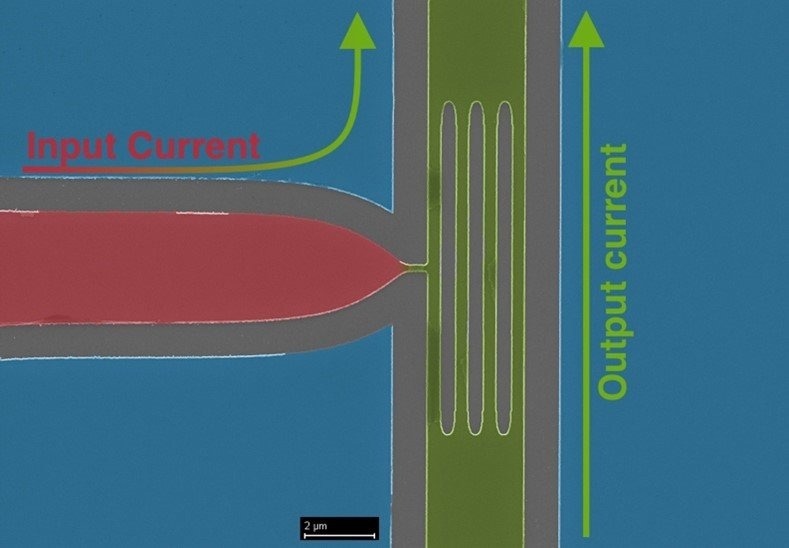Reviewed by Lexie CornerApr 15 2024
Superconductors can conduct high electrical currents with no resistance at all. When there is too much current, for example, they cannot conduct currents without resistance. By constructing ultrathin superconductor-based small electronic components, scientists can harness this phenomenon to produce a switch, like a transistor.
 A scanning electron microscope image of the superconducting nanowire switch. Large electric output currents in the green channel can be switched on and off by small input currents in the red gate terminal. Blue is the superconducting ground plane. Image Credit: Argonne National Laboratory
A scanning electron microscope image of the superconducting nanowire switch. Large electric output currents in the green channel can be switched on and off by small input currents in the red gate terminal. Blue is the superconducting ground plane. Image Credit: Argonne National Laboratory
The Impact
Future superconducting electronics or particle detectors can profit from the use of nanowire superconducting switching devices, often known as nano-cryotrons, or nTrons for short. For instance, they might be perfect for the Department of Energy’s upcoming Electron-Ion Collider.
Researchers found that minor modifications to a switch's shape can raise the current at which these switches can function dependably. Additionally, the study demonstrated how well these switches function in magnetic fields—a crucial step for many applications.
Summary
The nTron technology has sparked significant research interest because it enables the development of basic logic elements applicable in complex superconducting electronics, such as readout or data-processing circuits connected to superconducting detectors of light and charged particles such as electrons.
This action is accomplished by injecting small gate currents through a small gate terminal, which causes an electro-thermal cascade in a connected large current-carrying channel, momentarily destroying superconductivity in the channel.
Researchers must demonstrate that these devices can run and perform effectively in magnetic fields since many of the experiments in which these devices would be used, such as particle collider experiments and quantum communication networks, do.
This study found that changing the design of the thin film device can improve performance in various aspects, including electric current gain and reset times.
A first-of-its-kind test in a magnetic field demonstrated that these devices can already work in reasonably strong magnetic fields, albeit with reduced performance. Based on these discoveries, researchers can design future devices that use geometric modifications to withstand considerably higher magnetic fields.
They can also start developing integrated superconducting nanowire sensors and electronic devices. These advancements will serve as the cornerstone for a wide range of studies, including particle tracking systems within colliders and quantum communication network repeaters.
The Department of Energy’s (DOE) Office of Science and Office of Nuclear Physics funded this research under the Microelectronics Initiative. The DOE Office of Science and Office of Basic Energy Sciences provided support for work done at the Center for Nanoscale Materials, a DOE scientific user facility.
Journal Reference:
Draher, T., et al. (2024) Design and performance of parallel-channel nanocryotrons in magnetic fields. Nature Astronomy. doi:10.1063/5.0180709